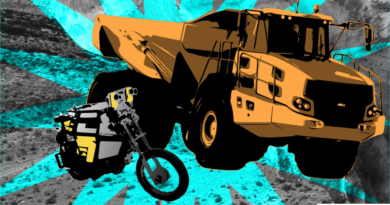gravityLab wants to tackle the artificial gravity problem
Living without gravity spells disaster for the human body. Even a few weeks in microgravity can lead to issues with circulation and vision; over the longer term, the complications compound even further. The heart begins to degenerate and atrophy. Bones turn thin and brittle.
But what about Martian gravity, which is around 0.38 that of Earth? Or somewhere in-between — 0.16 G on the moon, or 0.91 on Venus? How do these gravity levels affect the body, plants and other organisms, even manufacturing processes? We have astonishingly few answers to these questions.
gravityLab wants to find some. The company is developing a spinning spacecraft that will be able to generate what co-founder and CEO Grant Bonin calls “programmable gravity.” The spacecraft will be equipped with a motorized boom that can extend and retract a counterweight. By dynamically varying the length of the boom and the rotation rate, the company says it will be able to control the acceleration of gravity inside the spacecraft.
Understanding the effects of different levels of gravity is key to securing humanity’s long-term presence in space, Bonin said.
“We just haven’t explored the full scope of the stuff that you and I would need to take with us on a mission to Mars and how much of it will continue to work [in Martian gravity], including our own biology,” he said. “The end zone here is making sure we understand that we can have babies in space.”
A fundamental (force) problem
Bonin has been interested in bioastronautics, a research area combining biology and spaceflight, for a long time. As a graduate student in aerospace engineering in the late aughts, he was piqued by two fundamental problems in space: “How do you get there and how do you stay there?”
In his view, many people were focused on the former question, but few were paying any attention to the latter.
Before he could tackle the challenge, his career took a different turn. After spending many years developing small spacecraft for the University of Toronto Space Flight Laboratory, he moved to Silicon Valley, where he started working at asteroid mining startup Deep Space Industries. From there, he was the first employee of Rocket Lab’s space systems division, before moving to launch facilitator Spaceflight Inc. (recently acquired by Firefly Aerospace).
But his interest in artificial gravity never faded. According to Bonin, he eventually asked himself, “Why aren’t you solving the most important problem that’s on your mind?”
He set out to do just that last year, when he and Chris Lewicki founded gravityLab. Lewicki, who is now an advisor for the company, is the former CEO of Planetary Resources, another early asteroid mining startup. gravityLab closed an undisclosed amount of seed funding from Village Global around a year ago to start building prototypes and develop the business.
“We spent most of our time looking at customer and market discovery, so we knew exactly what to go after,” Bonin said. “The well of problems is very deep, deeper than actually we thought.”
Some of the use cases for gravityLab’s spacecraft are relatively obvious: For example, customers may want to use the platform to ensure their subsystems work in lunar gravity before a mission to the moon. Others may want to send up model organisms, like fruit flies or mice, to understand how different levels of artificial gravity affect the human body. Controlling gravity would help researchers discriminate between its effects and other variables, like radiation.
But other use cases have likely not even been considered yet. Being able to precisely program gravity could enable the production of things that cannot be made on Earth or in space today. A handful of companies, including Varda Space Industries and Space Forge, are developing manufacturing and Earth return capabilities, but their spacecraft will operate exclusively in microgravity. Bonin said gravityLab will enable “a different kind of manufacturing.”
“I’m trying to get people thinking, ‘Hey, what can I do with programmable gravity?’ Because they know what they can do with zero G,” Bonin said.
The future of gravity in space
Of course, the Seattle-based startup is not the only company planning for a future of human life in space. A whole crop of commercial space station initiatives has emerged in response to the impending decommissioning of the International Space Station in 2030, ranging from Vast Space’s Haven-1 to Gravitics’ station modules. Both companies intend to incorporate artificial gravity capabilities over the long term.
Bonin said gravityLab’s solution is complementary to these initiatives. The startup’s first spacecraft will be very compact — around the size of a small refrigerator — but with enough useful volume to accommodate a range of experiments. The retractable boom will extend to up to 20 meters and will be able to generate upwards of four revolutions per minute, a rate that simulates lunar gravity. Eventually, Bonin envisions the spacecraft becoming much bigger — even acting as a kind of “mudroom” for commercial space stations.
gravityLab’s first demonstration mission, called gLab-1, is currently planned for late 2024 or early 2025. The company has contracted with Astro Digital, a California-based space systems company, for the satellite bus. Once the technology is demonstrated on a microsatellite platform, the possibilities multiply. Bonin suggested that eventually, one might imagine a Stoke Space or Starship reusable upper stage that can be deployed, spun and returned entirely to Earth for sample recovery and refurbishment.
But Bonin isn’t planning on waiting that long:
“We can do this now, without waiting for new launch vehicles to heave into existence,” he said. “We can start doing risk reduction work now that will powerfully inform a human future in space, and we can do it in single-digit millions, single-digit years, per mission, per user. I don’t want to wait for anything or anyone.”




